Film+
Use Film as A Mirror: The Awakening of Female Consciousness in Creative Filmmaking | NEWHER A Record of Li Shaohong Workshop & Masterclass
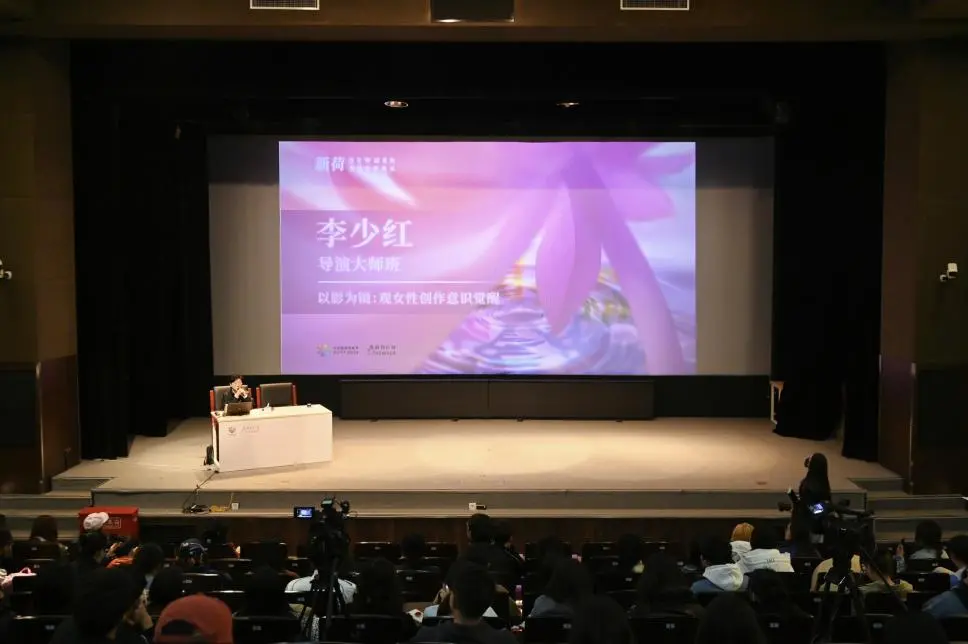
Li Shaohong Workshop & Masterclass during the 14th BJIFF
The unique viewpoint brought by their gender is a strong suit of female directors as it helps them present their ideas with an angle completely different from male filmmakers.
There is no golden rule in artistic creation. A director can try anything beautiful, new or considered to be helpful for the film. One attempt by the director might define the director-as-author nature of the film and make the director a unique auteur.
I am grateful that my female awareness when I shoot films evolves from a spontaneous behavior to a conscious activity as I keep practicing and exploring it. It’s never too late to deliver “what you have seen” and your thoughts in your films as you never stop working. Female filmmakers should guide more film viewers to learn about diversified female perspectives, views and perceptions and know the world from more dimensions. A female filmmaker does not have to stay in line with others as she only needs to stick to the principle of “becoming the voice of women and speaking up for them”, interpreting in her own way how women live their life and what it means to be a woman.
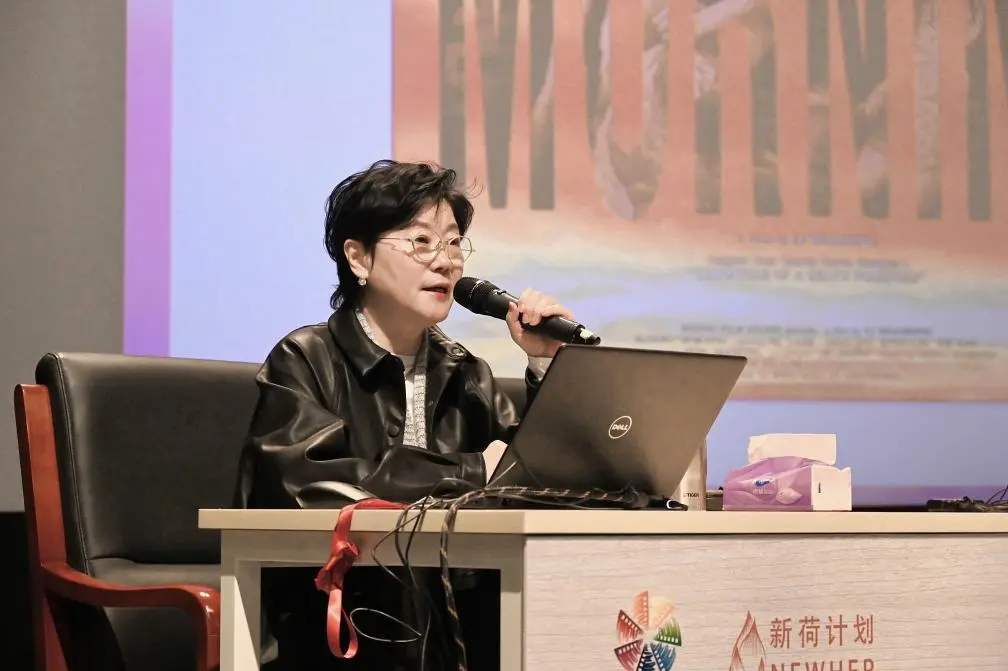
Director Li Shaohong shares her opinions and ideas in her Workshop & Masterclass
Director Li shares her feelings and experiences from more than four decades of filmmaking with the audience, and has an in-depth discussion on the awakening of female consciousness in creative filmmaking which has been showcased in many movies.
Chinese films have gone through a major shift in the past four decades with collective consciousness as the main theme of movie (during the 1980s and 1990s) changing into a diversified pattern of filmmaking (between the end of the 1990s and early 21st century). The rapid development of Chinese contemporary culture brings vigor, vitality and various opportunities to China’s film industry, and Li’s creative style can also be divided by the two aforementioned periods.
▍Bloody Morning: The Subtle Budding of Li’s Female Consciousness in Creative Filmmaking
The last ten years of the 20th century was an era of volatile ideological shift in China, and director Li Shaohong started her filmmaking for real at this time. Female consciousness penetrated subtly into her creative filmmaking despite the fact that the mainstream collectivism still defined film’s visual language at that time. The shadowy and underlying characteristics of female consciousness are presented as a part of the core idea of Bloody Morning. The female character development of Hongxing is a case in point. In the film, Hongxing discovers that she has a self-concept, though the self-concept development is at a start-up and confused stage.
It was really tough for us to shoot this film because we had to travel a long way and move all the equipment to the mountainous area manually. We set up a rail track over 10 meters and a moving crane, and the cameraman stood on the moving crane. We had to move the rail track to the next location after we filmed the last one because the track was not long enough. After the camera dolly traveled through the track, we had to relocate the track. This was how we “built” the whole rail track piece by piece, and the film crew worked like a bunch of porters. Ma Bingyu, Beijing Film Studio Deputy Director, paid a visit to the shooting site. He couldn’t help shedding tears when he saw this. He granted 100,000 yuan as an additional investment for the film when he returned to his office, which really touched us. The shooting cost of Bloody Morning is nearly 520,000 yuan. The film was awarded many international prizes. I have to say that China’s ideological transformation in the 1990s gave us many opportunities.
The rise of Chinese TV series happened in the late 1990s. The market for TV series became more mature. More filmmaking and performance techniques were introduced to China. Domestic filmmakers began to learn more types of film languages. The styles, production companies and topics of films were flourishing, and the directors were given a lot of freedom of creation. Female consciousness was awakened in domestic creative filmmaking, and Chinese female filmmakers made such attempts in many other areas. Female consciousness was first showcased in Chinese films by various means and through their combinations.
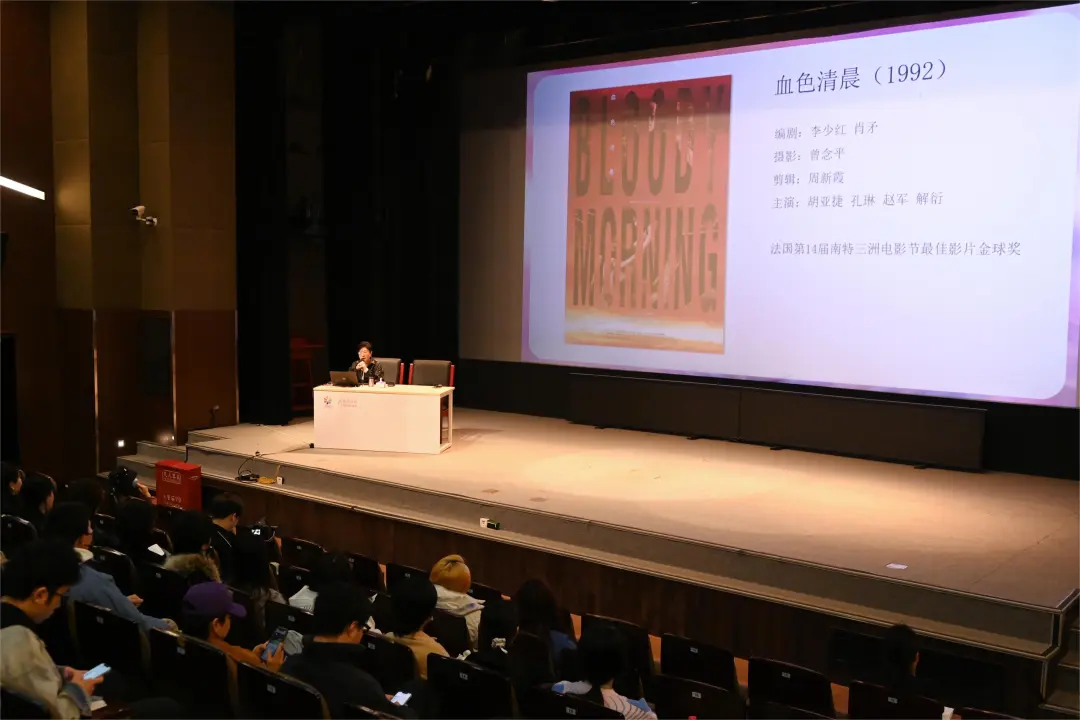
Director Li Shaohong shared her experience of shooting Bloody Morning at the site
▍Blush: A Breakthrough to Open up Feminism-oriented Creative Filmmaking
The film Blush which I shot in 1995 is a big change for me in terms of storytelling and cinematic form. The fiction of the same name written by Su Tong gave me great touches when I first read it as the unique female narrative perspective is sentimental and moving. The pre-production took three to four years during which director Hark Tsui and Mr. See-Yuen Ng provided the first investment for the film, and the script writing was therefore officially started.
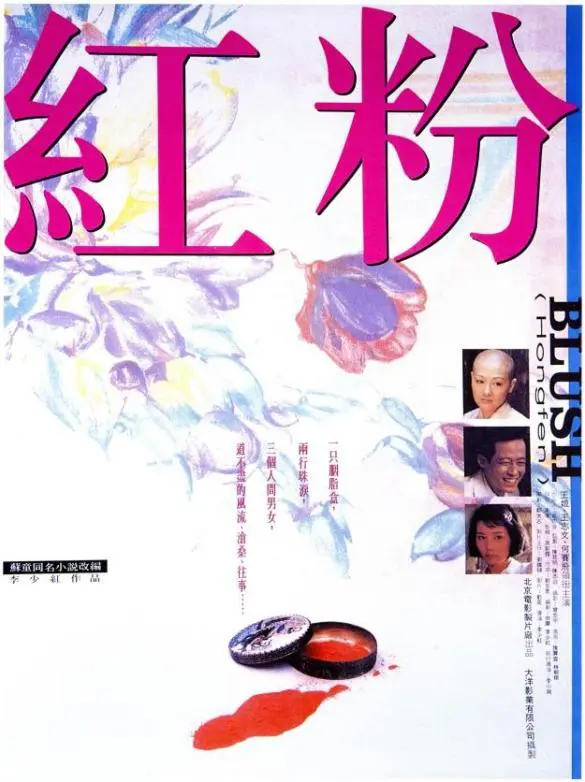
The poster of Blush
We were adapting the fiction for the screen, interviewing relevant people and searching a huge number of historical documents while looking for investors. However, the interview gradually changed how we finalized the script, which told a story about reschooling the prostitutes and the narrative perspective also changed from the two girls to the group of the streetwalkers. I was a little confused when the shooting was about to happen because my initial thoughts for this film had been gradually replaced by collectivism during the pre-production. I rewrote the script later in Suzhou and made the narrative perspective go back to the two girls. A lot of people thought the key for Blush to win the prizes was the take of the prostitutes leaving by boat. This is indeed a highlight of the film, but I think the real reason for Blush to become an award-winning film is the female narrative perspective of the two girls. The film viewers can learn about the turns in life of every woman in her time and her thoughts on these turns by seeing what life throws at the two girls. The cinema-goers can also witness the epochal change of their time from their mental activities and see what life-changing decisions they made when this epochal change took place.
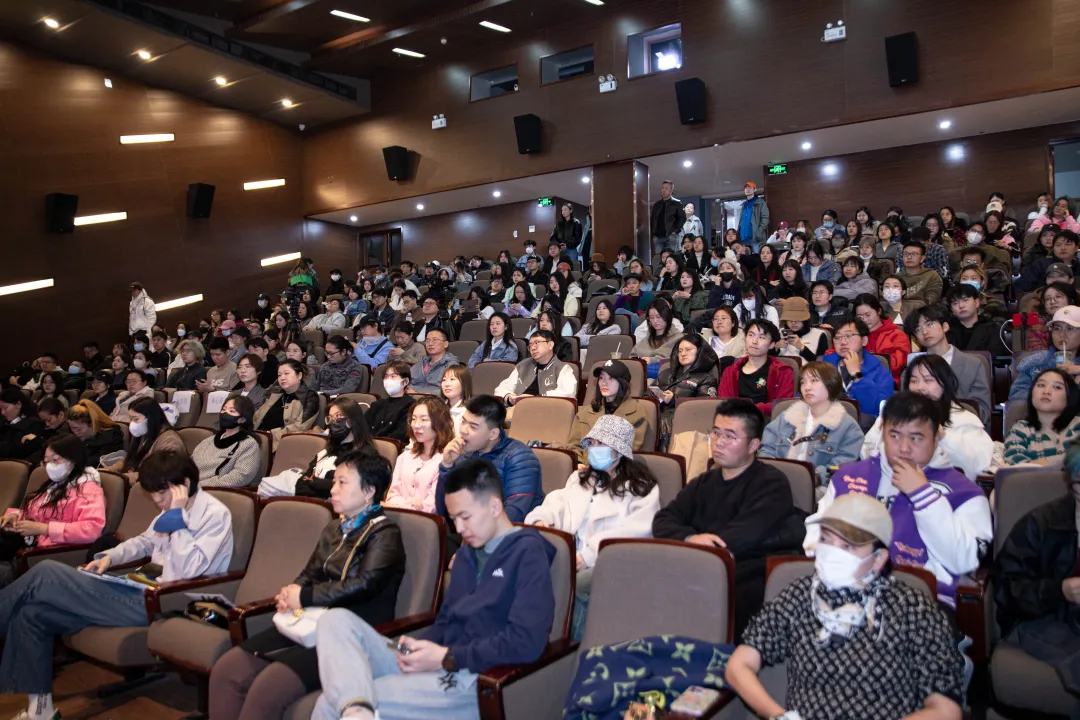
Director Li Shaohong at her Workshop & Masterclass
▍Palace of Desire: An Innovation and a Reform of Narrative Perspective and Artistic Style
When we decided to shoot Palace of Desire, Liu Xiaoqing, Chen Baoguo and other famous actors and actresses had already made the hit and well-received TV series Empress Wu Zetian with a same leading role in 1995. So, it was undoubtedly a huge challenge for me to retell the family history of this unique and well-known empress in Chinese history on screen.
I approached this project with a little trepidation, but then I found the 1995 TV series has a different narrative perspective from mine. Empress Wu Zetian tells a story of how a queen controls and exercises her power from the perspective of history and political system, but I wanted to show who she really was. I tried to feel and imagine how Empress Wu lived her life and what roles love and affection played in her life in the context of the feudal dynasty. And this was a truly novel narrative perspective at that time.
Moreover, the Tang dynasty is known for its prosperity, openness and romantic and colorful lifestyle, so we chose a poetic and fantasy-oriented artistic style for the TV series which was very uncommon back in the 1990s. The routine when shooting a historical television drama at that time was to choose the conventional Chinese-opera-based costumes and character design, but we broke the routine and favored the makeup and character design based on opera and stage performance. It matched well with the poetic dialogues delivered in the television drama. We were lucky to get to know the renowned costume and production designer Mr. Timmy Yip in Taiwan, China through the introduction of Peggy Chiao and Winston Chao. We spent three months on fitting and clothing alteration and makeup and jewelry improvement round the clock, and this was how we designed over 1,000 costumes and completed character designs in such a short time.
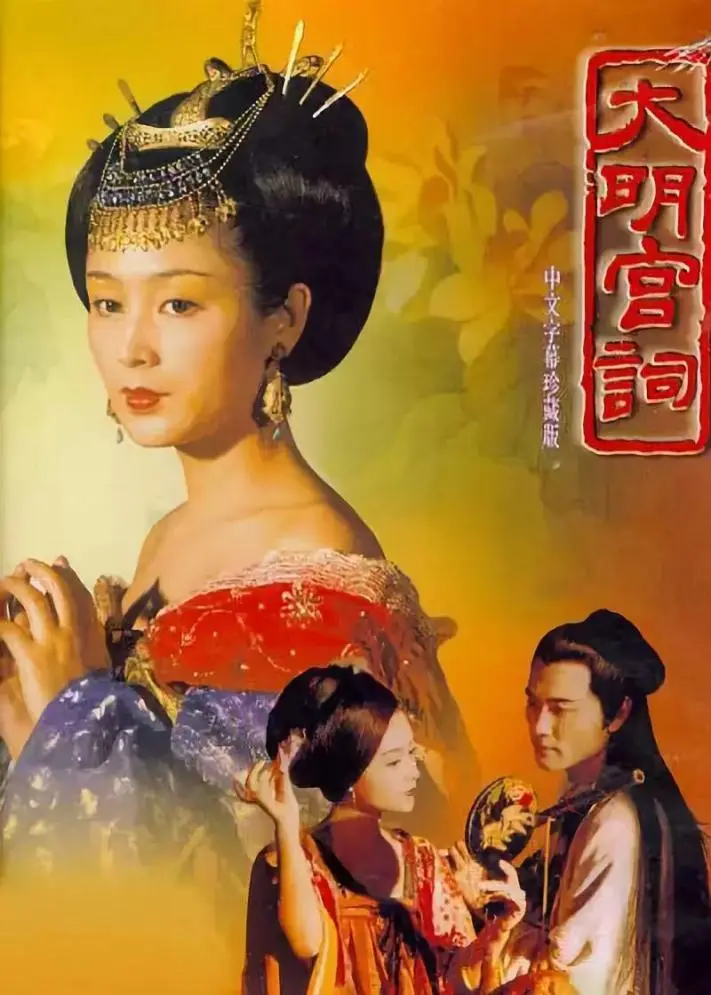
The poster of Palace of Desire
The casting was also very unconventional. Wu Zetian is portrayed as an overbearing and unbridled empress in most Chinese historical records, but I think a real “ruthless person” like her should make others in awe of her without putting up a show of being angry. If not, she couldn’t stand out and make all the civilian and military officers at court work themselves to the bone, let alone occupy an important position in a man’s world. Everything she did had a rational motive, and more importantly, she did them to protect her family and maintain good interpersonal relationships. In this case, the makeup and character design for the female roles should show their personal charisma. This approach proves that we start to use our own female consciousness and perspective in artistic filmmaking consciously.
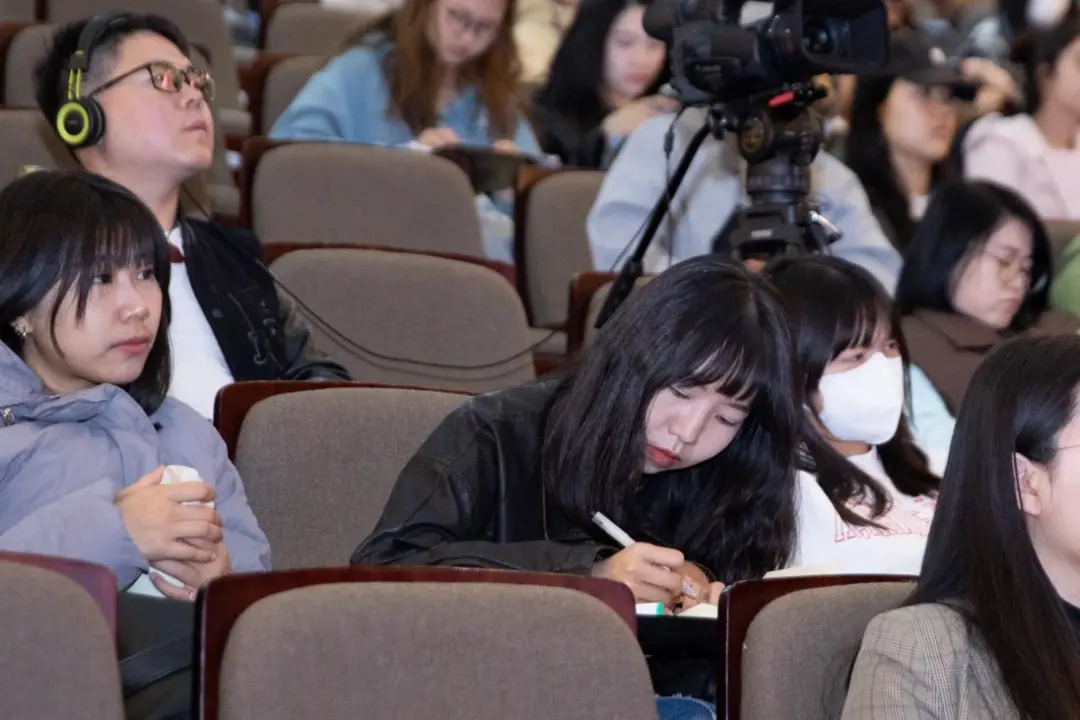
The photo of Director Li Shaohong at her Workshop & Masterclass
▍Hero: Exercise the Non-negligible Women’s Power Earnestly
Hero is a film created by three female directors: Sylvia Chang, Joan Chen and Li Shaohong. Each of them depicts a life journey of a family and the women in the family in the midst of the COVID-19 prevention and control period which leaves a mark on the female roles from a female perspective. Director Li films the story about a mother-in-law and a daughter-in-law starred by Zhou Xun.
I fully realized the women’s power is non-negligible during the filming. Women can survive independently and fulfill their duties without relying on others. Statistics show that female staff accounts for sixty to seventy percent and above of the workforce in hospitals during the pandemic, greatly outnumbering men. Women are more perseverant during a disaster; they are the pillar of their family. We cannot survive and thrive in the midst of tragedies and difficulties without women’s power.
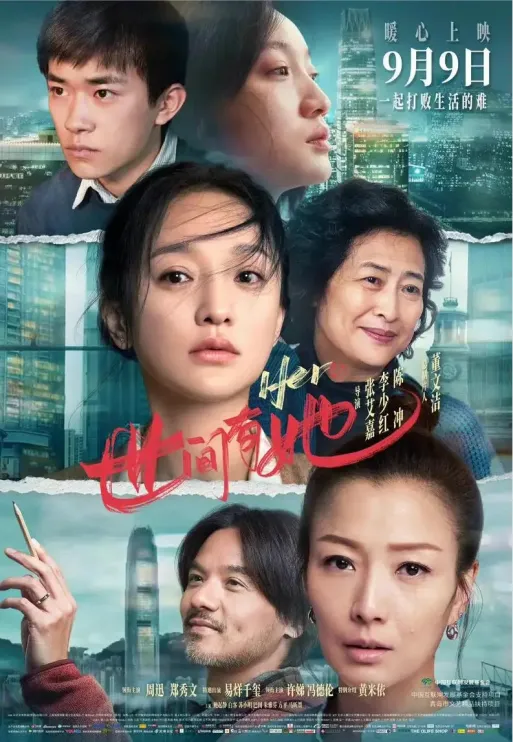
The poster of Hero
The Crossing, the first film supported by the Young Director Support Program, was filmed by the young female director Bai Xue. Other women-directed films endorsed by the program include The Old Two Girls, Flaming Cloud and A Song Sung Blue. Female directors have a strong presence in the 2023 top 10 young directors ranked by the program. Women-directed films almost always lead the charge when the program ranks top 10 young directors each year. Female directors’ strength and perseverance are beyond imagination, and they are a force in the industry that must not be underestimated.
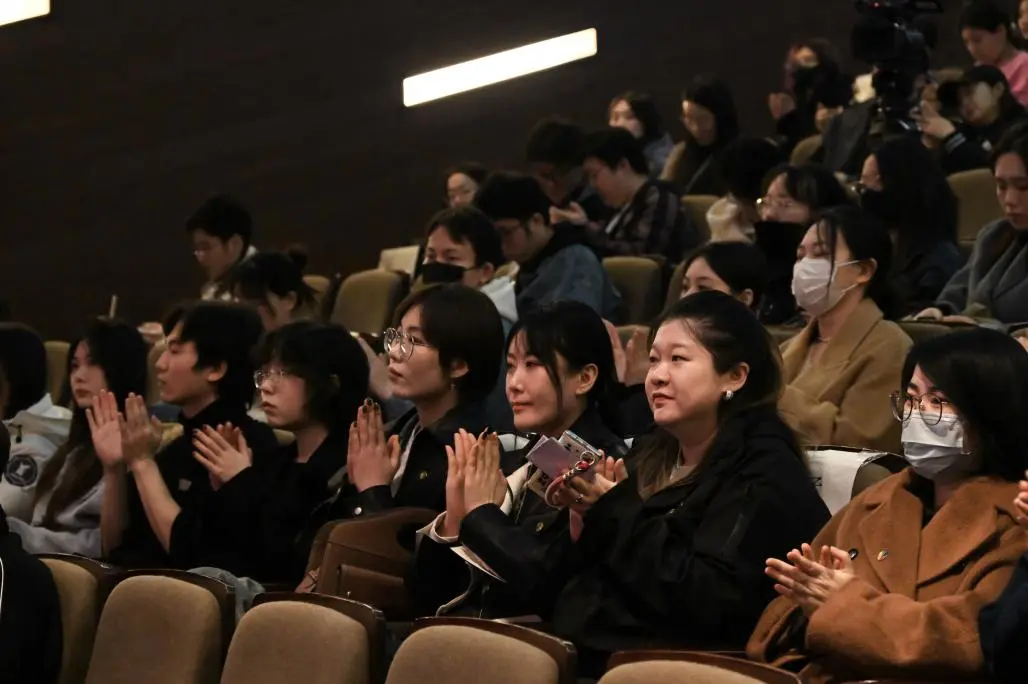
The photo of Director Li Shaohong at her Workshop & Masterclass
▍Speaking up for Women is an Arduous and Long Fight and You Must Take Every Step to Get There
The two periods I went through witnessed the shift of my artistic creation. It makes my generation of directors evolve gradually, which has much to do with our growth and changes in our society. Young female directors now have a clear recognition of self-orientation and self-perception. They are utterly different from us and more determined to handle female perspective, women’s film and female modes of thinking.
Q&A:
Young female director Zhao Siying: Can you share with us some of your uncommon experiences when filming a movie or television drama?
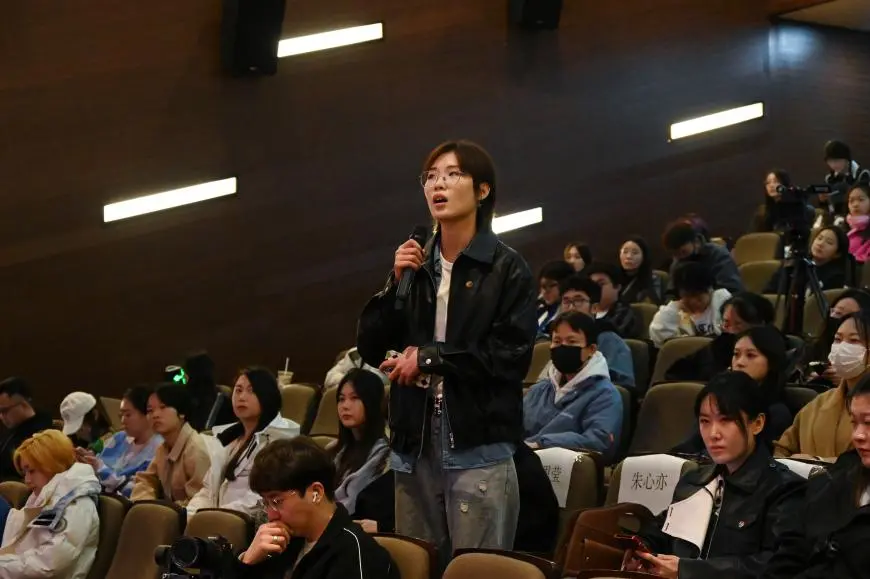
Young female director Zhao Siying asks a question at Li Shaohong’s Workshop & Masterclass
Li Shaohong: I was really confused when I switched from filming movies to making TV series. It’s said that the filming and creative practices of television drama are easy because mise en scène and multiple camera positions are not needed. You just need to have more lines, and some of the narrative structures of film can hardly be used in TV series as well. I was not happy about that, and in the end, I decided to film the television drama following the shooting style and narrative structures of film after a lot of fight. In so doing, it gives more richness to the TV series. You don’t have to restrain yourself when filming a television drama. The two things have their respective characteristics, but they follow a similar law of art. We arranged many camera positions and staged the events for the camera when filming TV dramas. After all, it is a video art.
Of course, we made an arduous effort for the shooting. It usually takes three days to film one episode, but we spent four days on one episode, five for important episodes. We were short of time and had a heavy workload. It required me to overcome many hurdles, and it was not easy for me to get the job done. For this reason, I exercise a lot to improve my physical fitness when not making a film or television drama, otherwise I couldn’t stick to the end. The director is the only person at the shooting site who must persevere. You have to hang in there and finish the filming. You must not do a lousy job because it will make you feel bad. All in all, it’s really a huge challenge.
Young female director Dong Mingxing: May I ask what’s your opinion about the globalization of streaming media and AI-based artistic creation? How should young directors seize this opportunity?
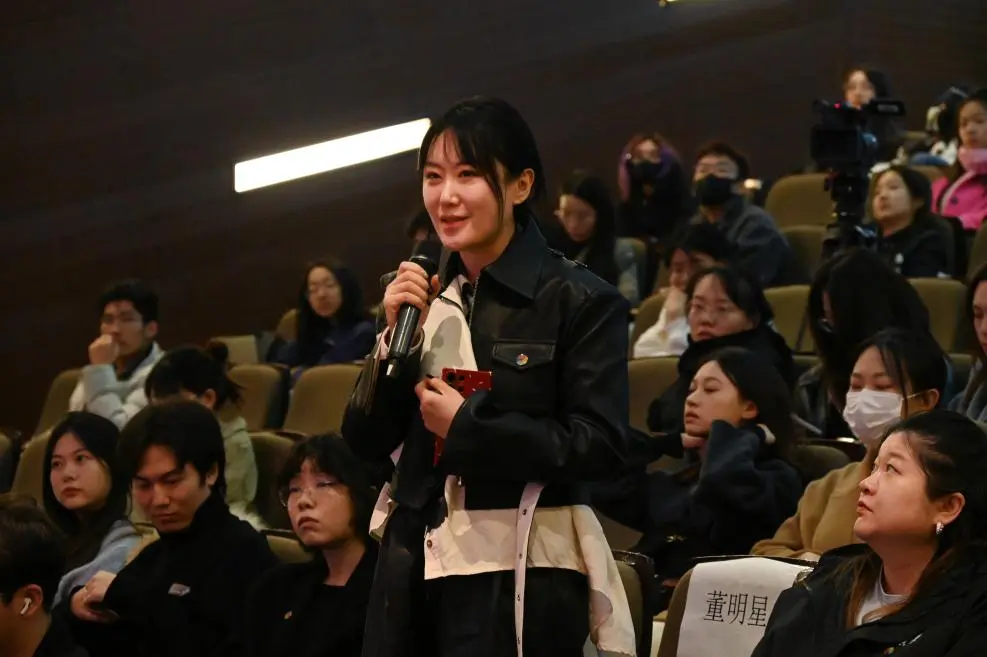
Young female director Dong Mingxing asks a question at Li Shaohong’s Workshop & Masterclass
Li Shaohong: Seize the day to film more movies. Do not wait until the script is completely OK. A film is made by shooting, not by writing, and shooting is important. You have to make best use of this three to four years and try to film more movies when labor and shooting site are still required. Shoot the films you want to shoot.
However, if you have watched the recently released Dune: Part Two, you have to admit that AI is well ahead as a tool. It can invent some new techniques which traditional filming is unable to do, but I think it’s not easy for AI to compete against human in terms of creativity. We still have time to do better than it with our intelligence and creativity.
As for the streaming limited series, they significantly divert viewers from traditional markets and make the viewers shape a fragmented viewing habit. A short video will be engaging if it has a punchline. I think the creators need to work a lot on their creativity to successfully deliver a punchline in a short video with a running time of one to three minutes. In this case, we don’t have to fight it. Instead, we need to study it as a training for us to create a feature film.
Young female director Xia Meng: Female filmmakers now face many barriers at work, such as working with a male director. May I ask how you overcome these hurdles?
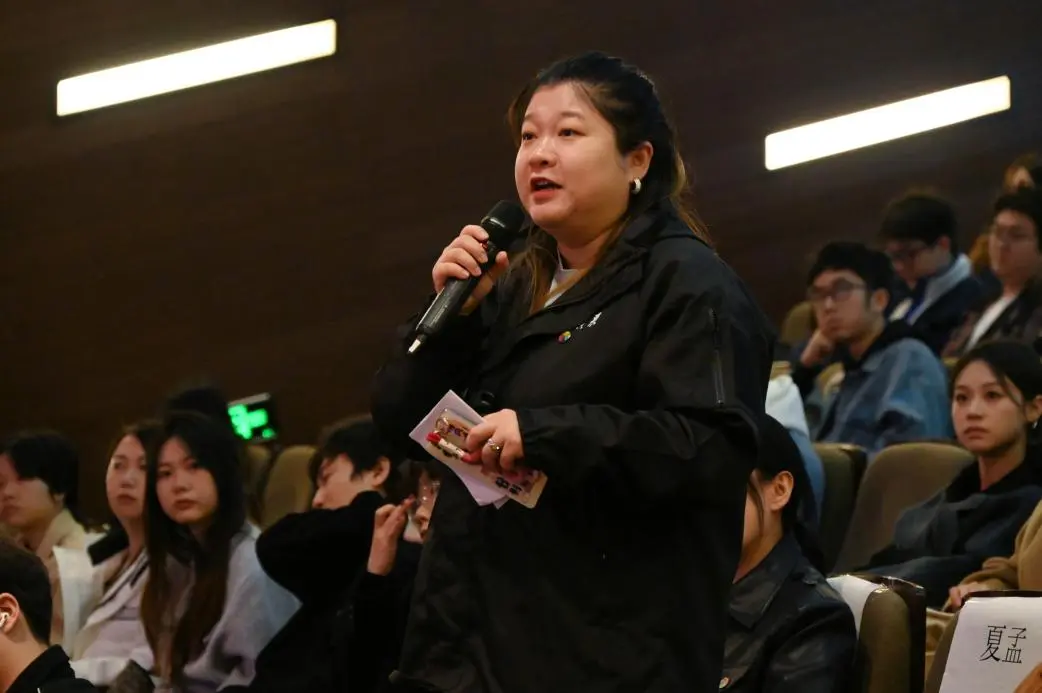
Young female director Xia Meng asks a question at Li Shaohong’s Workshop & Masterclass
Li Shaohong: I think every filmmaker worries about if his/her concept can be accepted during the creative process, and it applies to both male and female directors. When you have disagreement with male directors and bounce ideas off each other, sometimes they can inspire you with their argument, and sometimes you have to defend your own idea and convince them. You can think your idea through when convincing them. If you successfully convince them, it means your idea is correct. If not, there might be flaws in your idea. In this case, you have to figure it out, and find more materials and information to support your idea. Your idea would be more valuable if you had a more thorough understanding of the subject.
Do not be afraid of having disputes with male directors. Films are often created from bouncing ideas off each other. You won’t have a full-blown idea on the first day. I think no one can do that. At least I cannot do that because I need to do a lot of work to figure out an idea that could work. I have forty years of filmmaking experiences like this, and this happens to me in every film that I have shot. From my experience, filmmakers should be bold in film creation, but they also should find a way to justify their concept. You’ve got to shoot a good film, making it an appealing expression of image and sound. All in all, you should captivate the film viewers with your artistic charm.
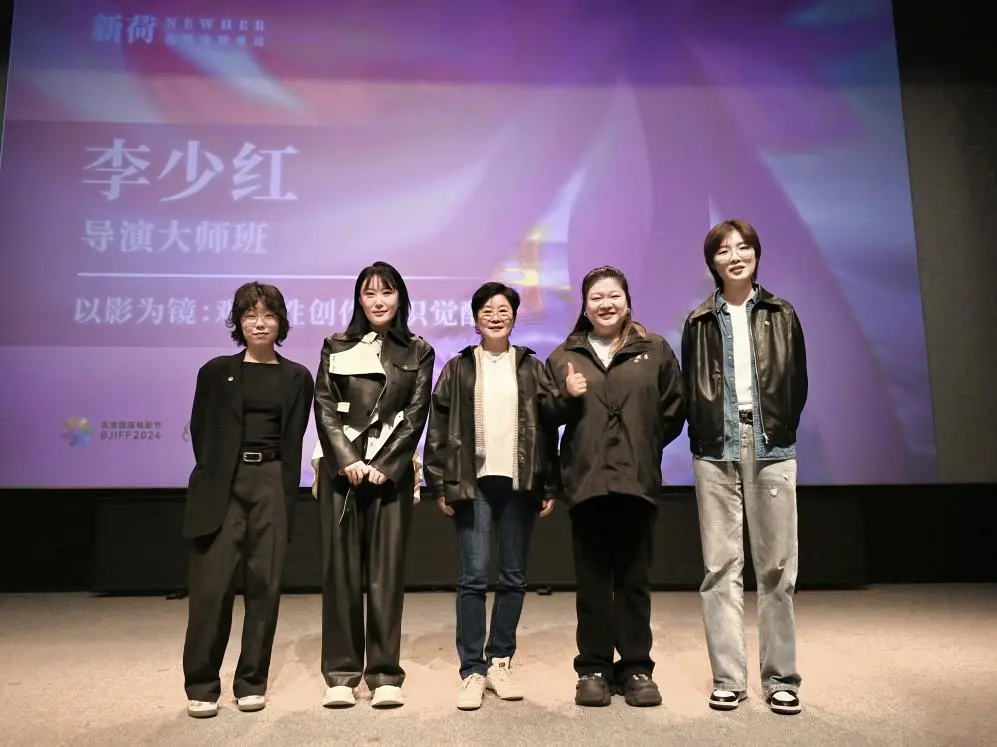
A group photo of the young directors attending Li Shaohong’s Workshop & Masterclass
The work experience of director Li Shaohong reflects the scene of an age and what’s filmmaking like in China. It also showcases the awakening of female consciousness in creative filmmaking, the conflict situations encountered by female directors in China and their growth. The opinions and ideas she shares with us not only give us strength, but also bring more encouragement and courage for the attending female filmmakers.
We believe an increasing number of female filmmakers will use film as a mirror to reflect real life, be brave in expressing themselves and enlighten the world with the teaching, encouragement and guidance provided by the respected veterans in the industry. Let’s work together to make the roles in women’s films more glorious and open up a new era full of vitality and diversity!
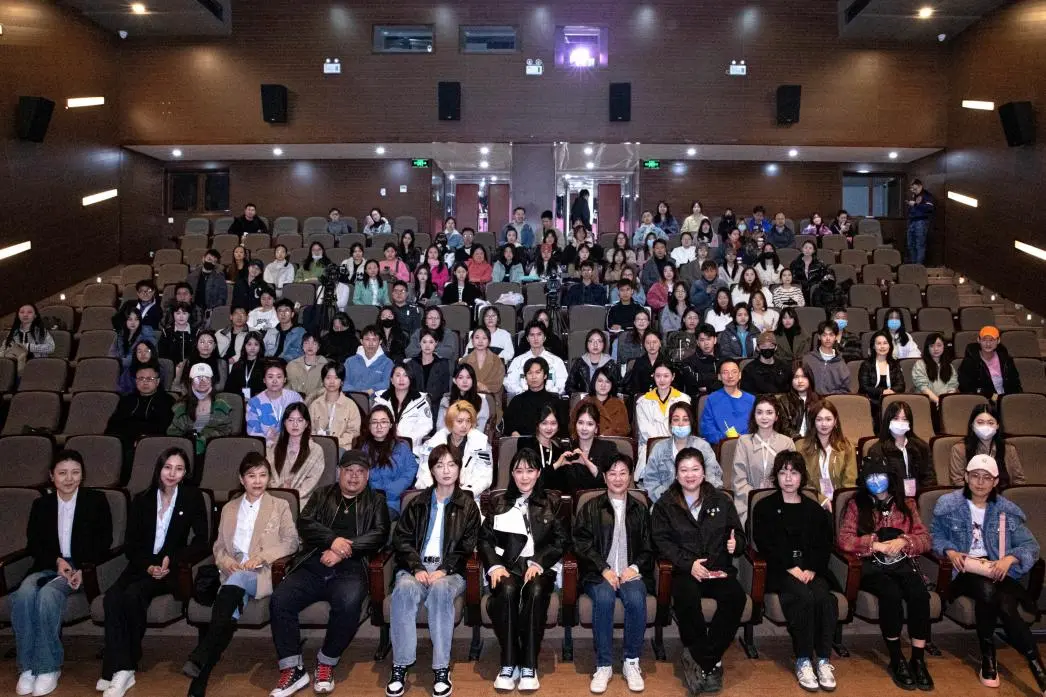
A group photo of the participants of Li Shaohong’s Workshop & Masterclass
Please download the Beijing International Film Festival APP for more interesting content

